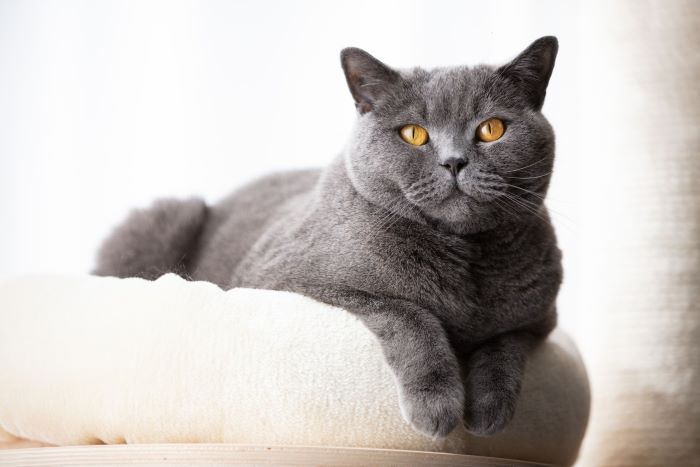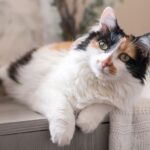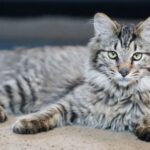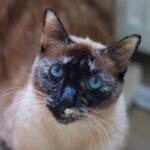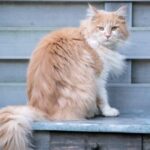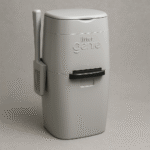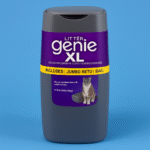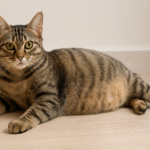This cat combines good looks with an easygoing temperament and is affectionate, although not overly demonstrative.
Originally developed from the best examples of ordinary British domestic cats, the British Shorthair was one of the first pedigree cats to appear in shows during the late 19th century. In the following decades, the Shorthair was all but eclipsed by longhaired cats, particularly the Persian, but survived by a narrow margin to enjoy a revival from the mid-20th century onward.
A descendant of cats that worked for their living, keeping down vermin on farms and homesteads, the British Shorthair is now something of a blueprint for the perfect fireside cat. The breed is highly popular in Europe and is steadily gaining a following in the US, where it is less well-known.
Many decades of careful selection have produced a well proportioned cat of superb quality. Powerfully built, the British Shorthair has a medium-to-large, tightly knit body carried on sturdy legs. The massive, round head, broad cheeks, and large, open eyes are characteristic features of the breed.
The British Shorthair has a short, dense coat that comes in a variety of colors and has a deep pile and firm texture. In temperament, this cat is as calm and friendly as its chubby-cheeked, placid expression appears to suggest. It can be kept equally well as a town or country cat.
Strong, but not athletic or hyperactive, a British Shorthair prefers to keep its paws on the ground and is perfectly happy to stay indoors and commandeer the sofa. However, it also enjoys time outside and readily uses the hunting skills that made its ancestors such an asset in the past.
Quietly affectionate, the Shorthair likes to stay near its owner. Although alert to what is going on in the household, this cat is not overly demanding of attention. British Shorthairs generally have robust health and can have a long life. They are easy to care for, since the thick coat does not mat or tangle and regular combing is all that is required to keep it in good condition.
Setting Standards
The first organized cat show, held in London, England, in 1871, was the brainchild of Harrison Weir, a British Shorthair enthusiast, who was highly rewarded when his own tabby won Best in Show. Known as the “father of the cat fancy,” Weir encouraged interest in selective breeding of cats to set standards of excellence. Among his many books was Our Cats, which introduced and illustrated various types and breeds.
Origin: UK, 1800s
Breed registries: CFA, FIFe, GCCF, TICA
Weight range: 9–18 lb (4–8 kg)
Grooming: Weekly
Colors and patterns: All solid colors.

